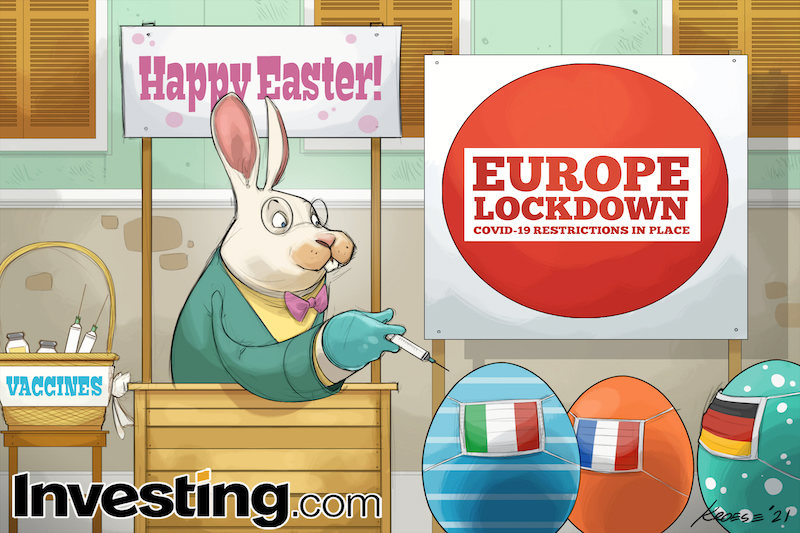Gold prices steady, holding sharp gains in wake of soft U.S. jobs data
By Geoffrey Smith
Investing.com -- Europe spent its second straight Easter almost completely locked down last weekend, celebrating the feast that most symbolizes the triumph of life over death in a profoundly subdued mood.
However, look close enough, and there are signs that the worst may soon be over for the continent. Infection curves, which had shot up in February and March as new variants of the Covid-19 virus spread fast, have now flattened in most countries, including in Germany and France, the region’s economic powerhouse.
French health minister Olivier Veran expects the numbers to peak by the end of this week, while the seven-day average number of new infections in Germany and Poland appears to have peaked at the start of this month. In Italy, the region’s third-largest economy, new cases have been on a downward trend for two weeks and the number of deaths is now also following them lower. Spain and Portugal appear to have the virus tightly under control.
Yet the improvement appears to be coming too late to save the summer tourism season, and all that that implies for the continent’s hard-pressed service sectors. Mindful of how last summer’s relaxation of social distancing rules prepared another explosion of the pandemic at the end of last summer, governments are desperately trying to find a way of ensuring that only those people mix freely who can neither catch nor transmit the disease, that is, the vaccinated.
That is problematic. Europe still hasn’t vaccinated enough people to stop such a policy being deeply divisive. With the ruling parties in France and Germany being severely punished in opinion polls and local elections for their perceived mismanagement of the pandemic, few have the appetite for stoking yet more division in their populations.
There are, however, signs of light, especially as regards sluggish vaccination rates: Germany took three months to inoculate the first 10% of its adult population but aims to do the next decile in one month. The EU has now approved four vaccines as both safe and effective - Pfizer/Biontech (NYSE:PFE), Moderna (NASDAQ:MRNA), Johnson & Johnson (NYSE:JNJ) and AstraZeneca (NASDAQ:AZN), even if it has a schizophrenic relationship to the last of those.
That relationship was strained anew on Tuesday as Marco Cavaleri, head of vaccines strategy at the European Medicines Agency, told the Italian newspaper Il Messagero that the EMA had established a link between the vaccine and potentially serious blot clotting disorders. These have resulted in some dozens of deaths, overwhelmingly in women under 60, causing many governments to suspend or restrict its distribution.
No doubt coincidentally, within an hour or two of Cavaleri’s interview hitting the wires, Bloomberg cited an unnamed EU official as saying that the bloc should have enough vaccine to protect over half its population by the end of June, somewhat earlier than planned. However, that is predicated on Europe’s medical regulators not obstructing the distribution the AstraZeneca vaccine. Any suggestion of political pressure on the doctors is, of course, unworthy.
New guidance from the EMA is expected on Wednesday, according to EU Health Commissioner Stella Kyriakides. So far the agency has said that the benefits of the AstraZeneca drug far outweigh the risks. Given that the reported problems are small in relation to the number of people protected, that would still appear to be the case. Settling that bruising and politicized debate once and for all would help get some egg off the faces of both regulators and politicians, and allow them to finish off their chocolate eggs with real confidence that the worst is now past.
https://www.investing.com/analysis/comics
